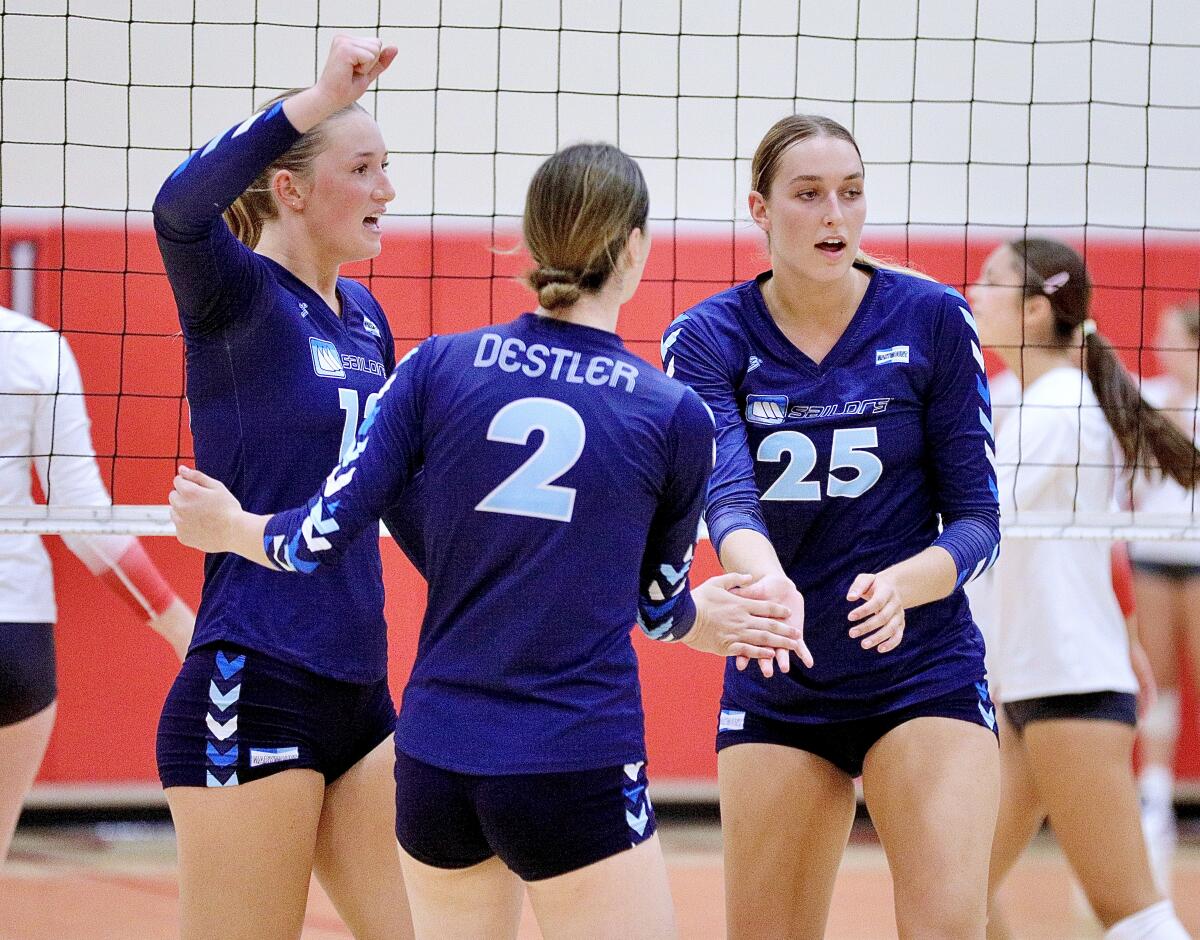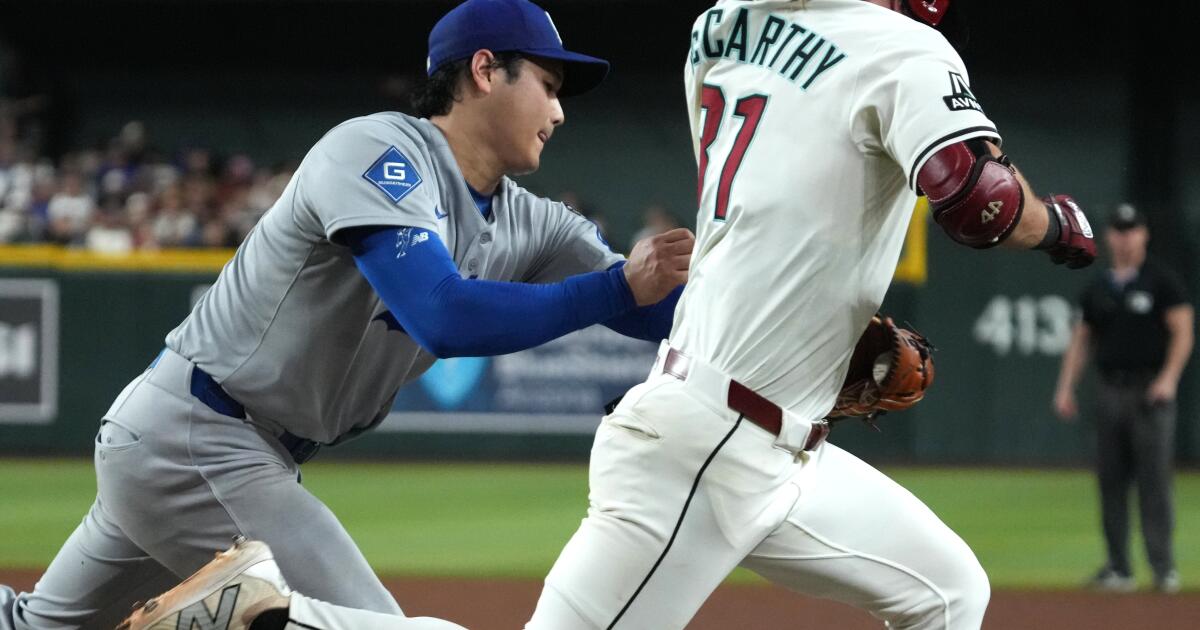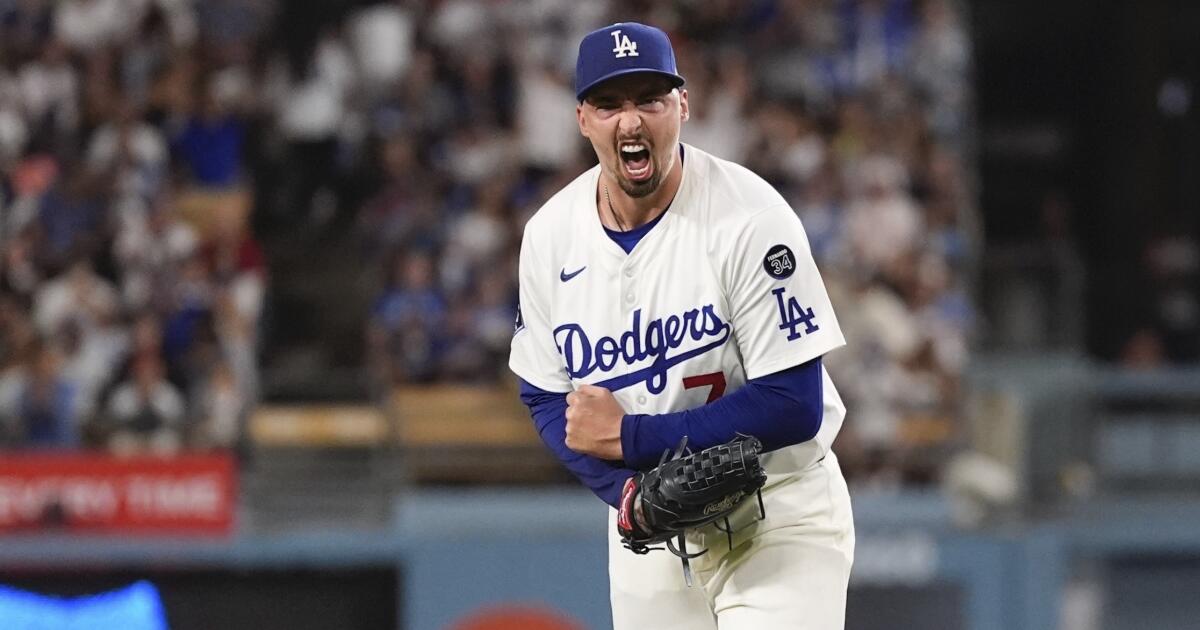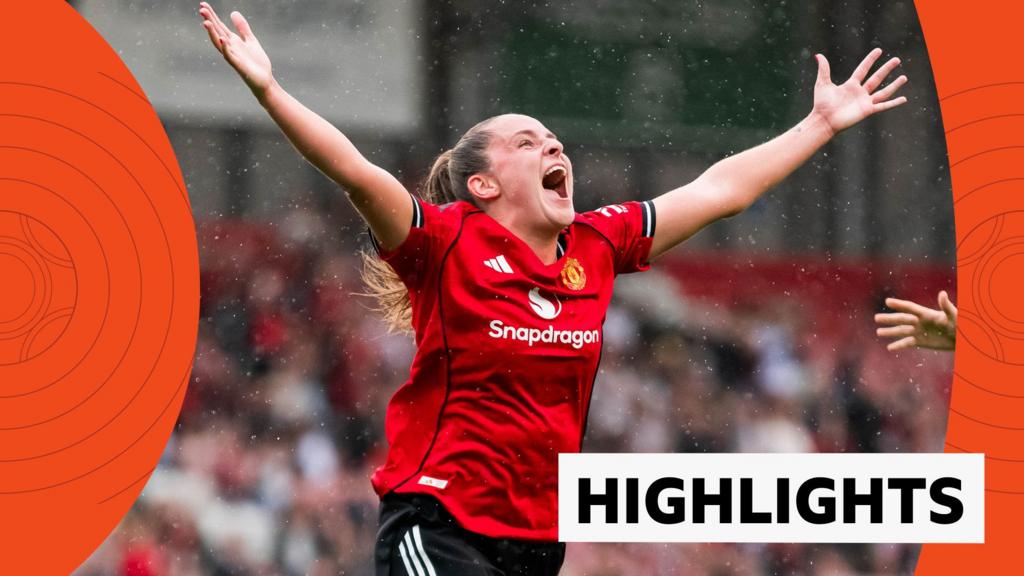Dominant Marymount High girls’ volleyball is chasing more titles
Its campus and enrollment are tiny, but Marymount High is a giant in the world of high school volleyball and this year’s squad looks to have the talent to compete for a championship.
The Sailors took first place out of 64 teams at the prestigious Durango Fall Classic in Las Vegas, taking down rival Sierra Canyon, 21-25, 25-15, 25-12, in the final on Sept. 20. Senior hitter and Washington commit Sammy Destler was named the tournament’s most valuable player.
Marymount did not drop a set en route to the Hawaiian Island Labor Day Classic title in Hilo in late August. Last weekend in Phoenix, the Sailors advanced to the championship match of the Platinum Division at the Nike Tournament of Champions Southwest, falling to reigning Southern Section Division 1 champion Mater Dei. The two programs could meet again in the CIF playoffs in November.
For those keeping score, that makes three finals and two titles at three tournaments in three different states over four weeks against the best competition in the nation — just the way head coach Cari Klein likes it.
(Steve Galluzzo / For The Times)
“Winning Durango was huge … and very fun,” said Klein, who reached the 700-win plateau early this season, her 28th at the all-girls Catholic school with 350 students across the street from UCLA. “These last two years we’ve gotten better the second day. Then playing TOC right after is a tough turnaround. It’s a lot of travel and a lot of volleyball.”
Three Sailors joined Destler on the all-tournament team in Durango: senior setter Olivia Penske (committed to Georgetown), junior hitter Makenna Barnes (an early Northwestern commit who has pounded a team-best 217 kills) and junior middle/opposite hitter and Stanford beach commit Katelyn Oerlemans, who leads the team with 63 blocks.
The roster also features senior middle blocker and Southern Methodist commit Elle Vandeweghe, senior middle blocker Frankie Jones (Brown), senior outside hitter Presley Jones (Amherst), senior libero Declan Eastman (Rice) and senior opposite hitter Grace Jamison (Lafayette).
Marymount lost to Mater Dei in one of the best finals in tournament history (28-26 in the third set) at Durango one year ago.
Girls’ volleyball coach Cari Klein has racked up more than 700 wins during her 28 seasons at Marymount High.
(Steve Galluzzo / For The Times)
“People don’t realize how few students we have or how academically-oriented it is,” Klein said. “Our girls have their books out in between every game. They’re studying on buses, on trains, in hallways … any chance they get to do schoolwork.”
Having played the sport herself (she was a state MVP at Irvine High in 1988 then an All-West Coast Conference hitter at Pepperdine), Klein demands a lot of her players, but she also tries to make the daily routine fun, worth getting up at the crack of dawn. Her motto is a hard practice makes an easy game.
Destler, who started playing for Klein’s Sunshine Volleyball Club when she was 8, takes that message to heart. After Marymount was dealt its first loss at Redondo Union on Sept 2, she stated: “We have practice at 5:45 a.m. tomorrow and I have to like it.”
The Sailors (29-3) are off to their best start since the 2021 team that finished 35-0, winning 92 of 100 sets in the process, and earned Klein PrepVolleyball.com national high school coach of the year honors.
Of the 20 players on varsity, eight are seniors and nine are juniors.
“This team is similar to the 2021 team,” Klein said. “What’s different is that those seniors four years ago were so hungry because they lost their junior year to COVID-19.”
Marymount’s longest drought between section finals appearances in Klein’s tenure is five seasons (2013 to 2017), so the team is about due. She also wants to add another player of the year to those she has already mentored — Haley Jorgensborg (2001); Stesha Selsky (2002 and 2003); Kelly Irvin (2005); Lauren Greskovics-Fuller (2011); and Elia Rubin (2021).
“There are nine or 10 teams in our section that could really give us a match,” said Klein, who has steered the Sailors to 10 Southern Section titles (including a record six in a row from 2001 to 2006), eight regional crowns and seven state championships since taking over the program in 1998. “Huntington Beach, Los Alamitos, Sierra Canyon, Newport Harbor, Santa Margarita, Redondo, Mira Costa, Harvard-Westlake, Mater Dei — all very hard to beat. And if you get to the next level, there are four San Diego schools that are really strong too. CIF is stacked.”
In addition to the postseason success, Marymount has won 24 league titles under Klein. To add to that total, it must beat Sierra Canyon, which defeated the Sailors three times last season. The first of the schools’ two Mission League meetings is Monday night in Chatsworth.
In one regard, a section title in 2025 would be sweeter than the others for Klein because she lost her home in the Palisades fire in January, as did some of her players. She has been living in Playa del Rey with her husband, former Palisades High quarterback Perry Klein.
“We’ve all had to deal with it already, but a lot of girls in the program have been affected and the younger club players as well,” she said. “It’s a pretty emotional year for Marymount.”







